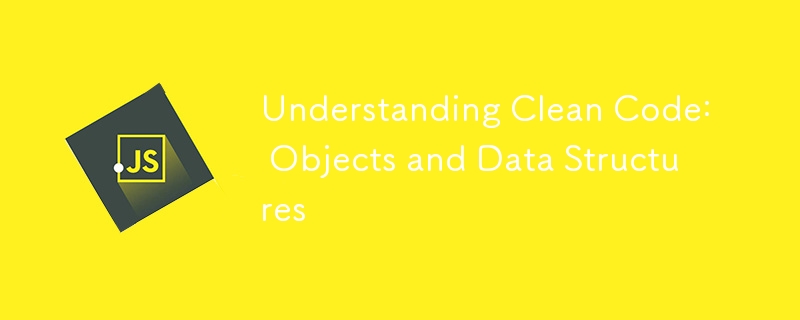

Understanding the distinction between objects and data structures is crucial when writing clean code.
Both have their place in software design but serve different purposes and are best suited for various scenarios.
In this article, we'll dive into the differences between objects and data structures, and explore when to use each, using JavaScript examples to illustrate the concepts.
Objects are the foundation of object-oriented programming (OOP).
They encapsulate both data and behavior, meaning that they not only hold information but also provide methods to interact with that information.
The core idea behind objects is to bundle data with the functions that operate on that data, ensuring that the internal state of an object is manipulated only through its methods.
Example of an Object:
class Rectangle { constructor(width, height) { this.width = width; this.height = height; } getArea() { return this.width * this.height; } getPerimeter() { return 2 * (this.width + this.height); } } const myRectangle = new Rectangle(5, 10); console.log(myRectangle.getArea()); // Output: 50 console.log(myRectangle.getPerimeter()); // Output: 30
In this example, the Rectangle class is an object that encapsulates the width and height data, along with the methods getArea() and getPerimeter().
The internal data (width and height) is protected and can only be accessed or modified through these methods.
Data structures, in contrast, are collections of data without any associated behavior.
They focus on exposing the data rather than protecting it, making it accessible for external functions to manipulate.
Data structures are more about storing and organizing data in a way that makes it easy to retrieve and modify.
Example of a Data Structure:
const rectangle = { width: 5, height: 10 }; function getArea(rectangle) { return rectangle.width * rectangle.height; } function getPerimeter(rectangle) { return 2 * (rectangle.width + rectangle.height); } console.log(getArea(rectangle)); // Output: 50 console.log(getPerimeter(rectangle)); // Output: 30
Here, rectangle is a data structure. It exposes its data directly, and the functions getArea() and getPerimeter() operate on this exposed data.
Unlike objects, there is no encapsulation, and the data can be freely accessed and modified by any external function.
Objects are ideal when you want to encapsulate behavior along with the data.
This encapsulation allows you to control how the data is accessed and modified, providing a layer of protection.
Objects are also well-suited for situations where different types of objects need to interact with each other through well-defined interfaces.
Data structures are useful when you need to simply store and organize data without attaching behavior.
They allow for easy and direct access to the data, which can be beneficial in scenarios where performance and simplicity are key.
Understanding the distinction between objects and data structures is essential for writing clean, maintainable code.
By choosing the right approach based on the needs of your application, you can create systems that are both efficient and easy to understand.
Happy Coding!
The above is the detailed content of Understanding Clean Code: Objects and Data Structures⚡. For more information, please follow other related articles on the PHP Chinese website!




